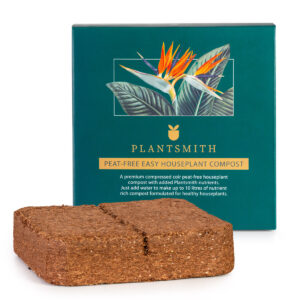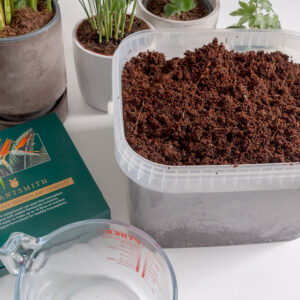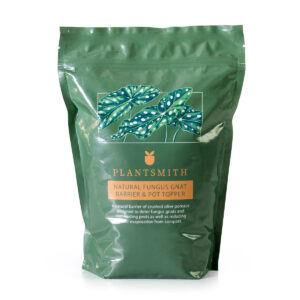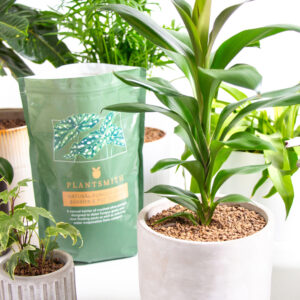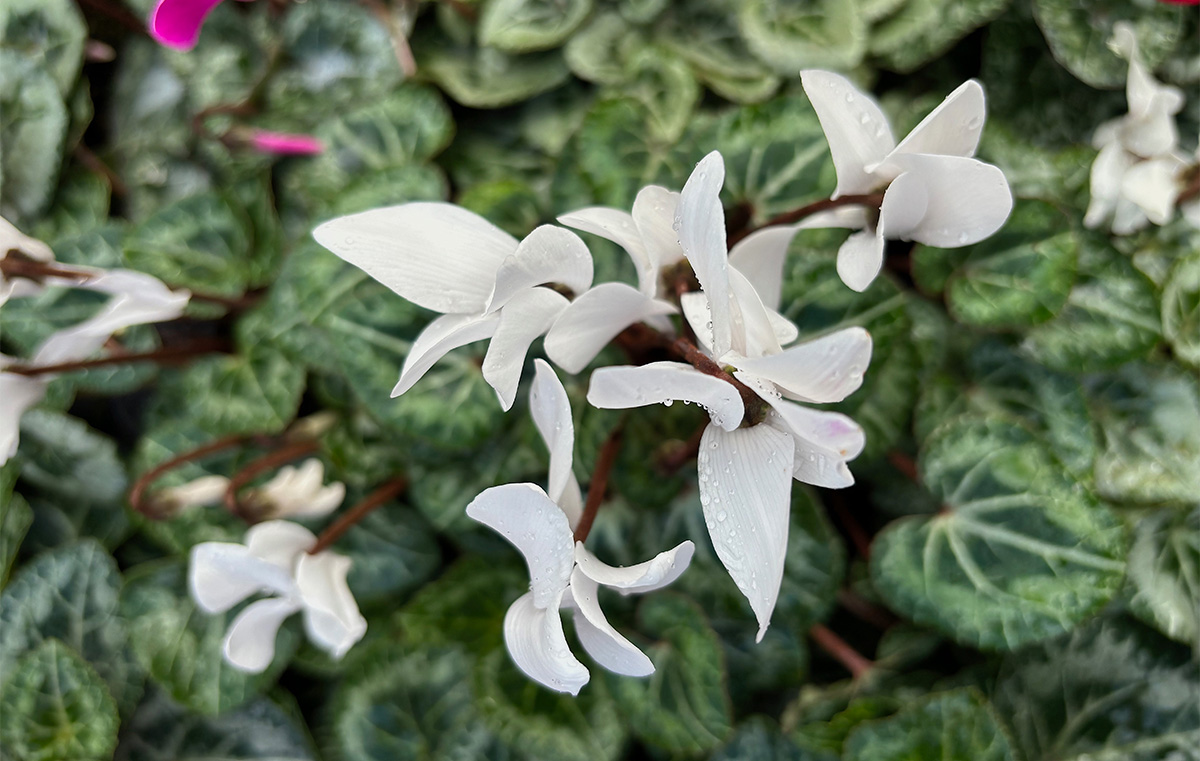Winter does not have to signal the end of botanic joy, instead surround yourself with an oasis of colourful foliage and flowering houseplants that will lift spirits even on the dreariest of days.
Cyclamen
If you are looking for interesting foliage and jazzy blooms then cyclamen are the way to go. Originating from the Mediterranean climates of Turkey to Iran, this herbaceous perennial has heart-shaped leaves often etched with silver patterned detail making this plant highly attractive even when not in flower.
With a kaleidoscope of shocking pink, white, scarlet and every shade of magenta, cyclamen never fail to make great table displays or brighten up a windowsill. Just keep them cool, around 10-15°C (50 – 59°F) and away from radiators, drafts and direct sunlight to keep flowers coming.
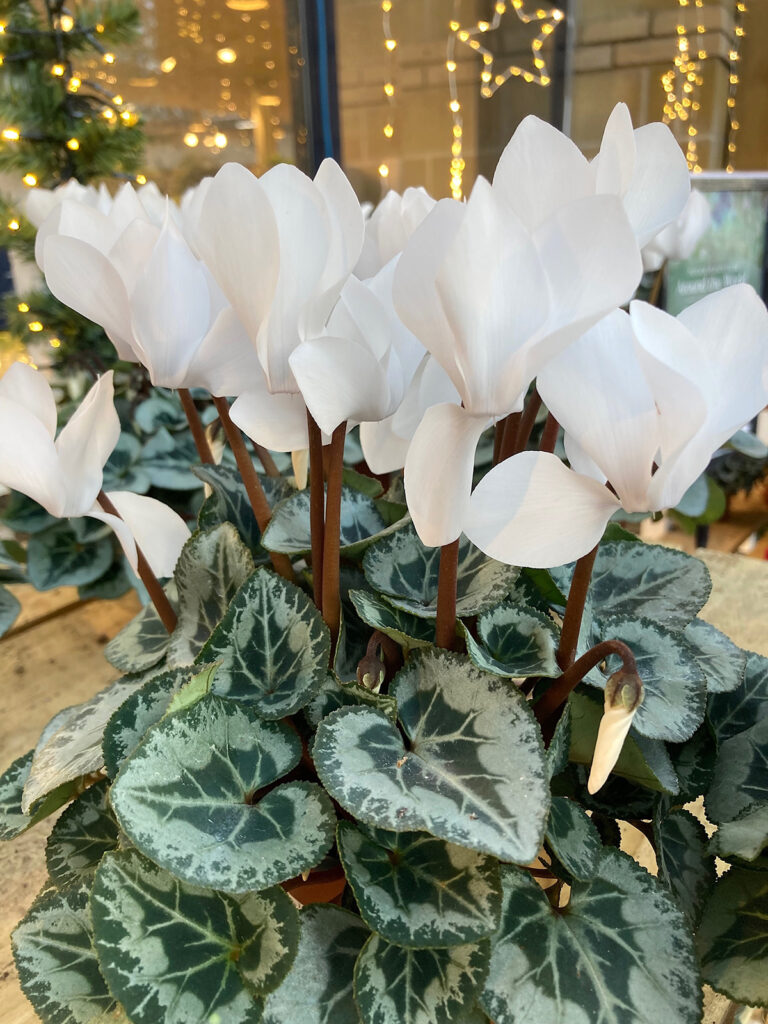
Requiring very little intervention other than occasionally removing dead leaves and flowers, water and feed sparingly with a diluted houseplant specific feed like Plantsmith’s Fortifying Houseplant Feed & Tonic once a month through its growing season. Tender Cyclamen persicum is an ideal potted houseplant for the busy Christmas season when time is short.
Begonia rex
Begonia rex is an impressive tender evergreen perennial originating from Asia. It has large metallic hairy heart-shaped foliage or spiralling snail-like leaves with shimmering silver, pink, purple, burgundy or green markings which retain their impressive multi-coloured display all-year-round.
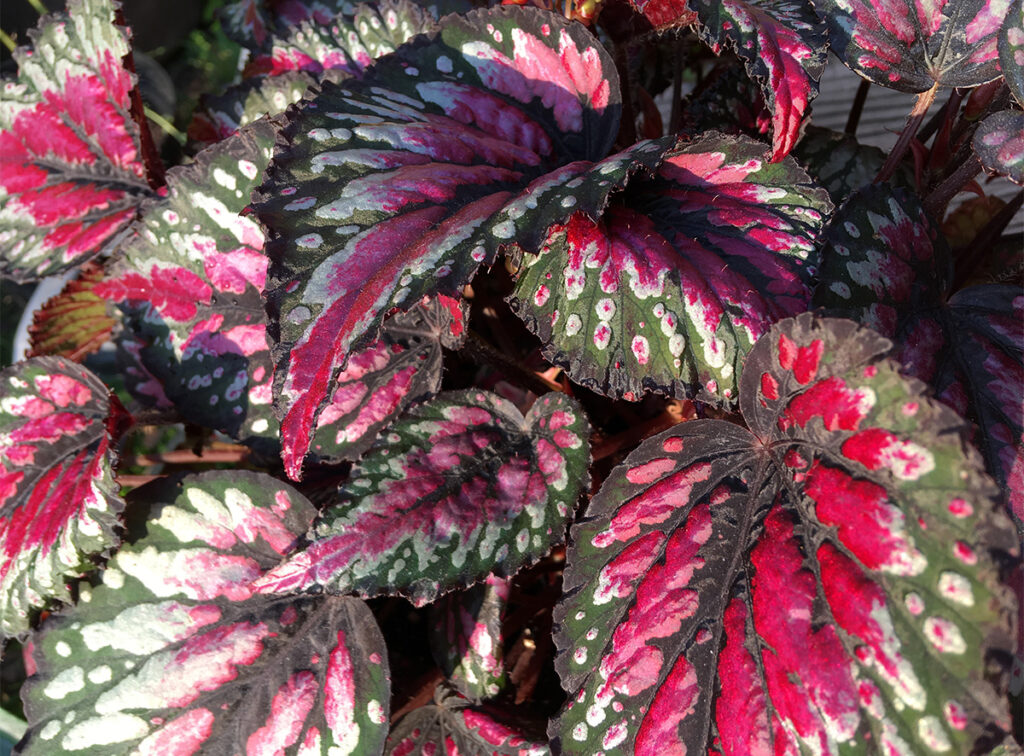
This is one of the easiest houseplants to grow and boasts over 500 cultivars to choose from. Many notable Begonia rex have attained the prestigious Royal Horticultural Society Award of Garden Merit such as ‘Escargot’, ‘China Curl’, and ‘Fireworks’.
Begonia rex thrive in bright indirect light with average household temperatures of around 15°C to 21°C (60°F to 70°F) ideally with high humidity, but avoid misting as this could encourage powdery mildew so a kitchen or bathroom would be good locations to home them for favourable conditions. Water with rainwater once the top inch of soil has dried out. Make sure your pot is well drained and allows water to flow from the bottom so roots do not sit in water.
Orchids
In the wild, orchids grow on tropical tree branches of south and central America and Asia, obtaining light filtered down through the canopy. These epiphytes are not parasitic but in fact use aerial roots to absorb carbon dioxide and moisture so are fed and watered from the humidity surrounding them.
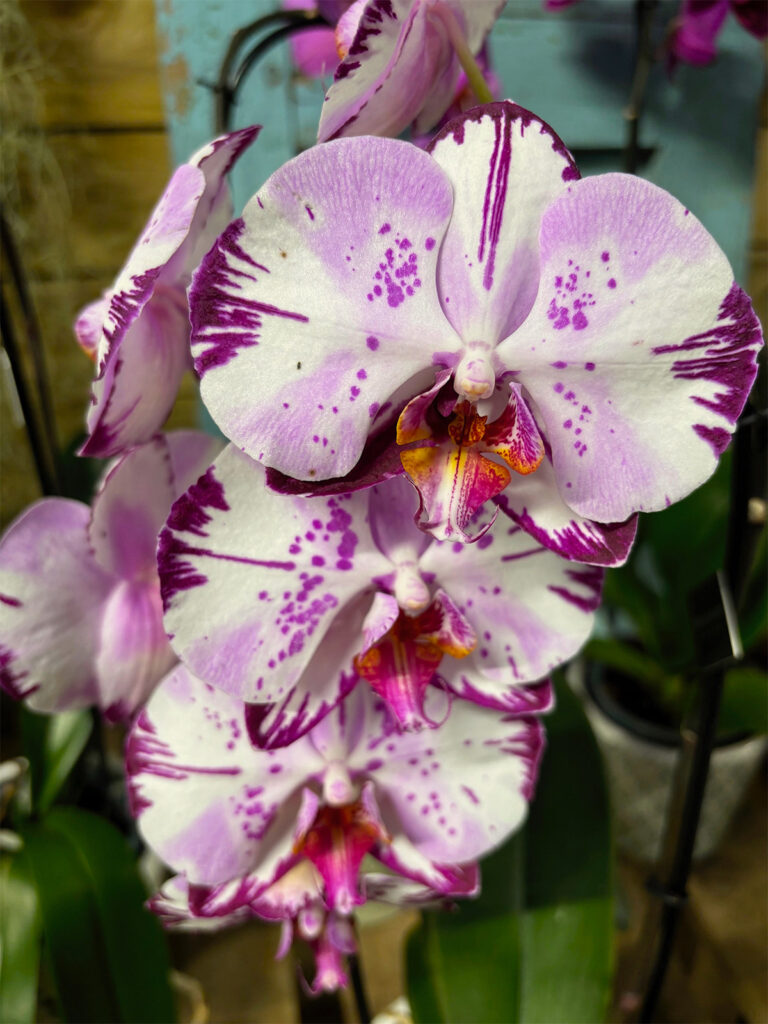
Phalaenopsis, or moth orchids, have long-flowering elegant blooms that form on arching stems and with a bit of care are very easy to grow. Keep orchids moist but not wet. Increase humidity by regularly misting foliage but avoid spraying the flowers. Plantsmith’s Invigorating Orchid Care Mist provides 12 essential nutrients to boost orchid growth and enhance flowering.
Feed every couple of weeks when your orchid is actively producing flowers and leaves. Flush water through the growing medium and let it drain then water again using Plantsmith Nurturing Orchid Feed and Tonic. Our professional orchid feed formulation contains 12 essential plant-boosting nutrients – everything your orchid needs to thrive.
As air plants, the growing medium needs to be airy and free draining so use orchid bark rather than compost to support the roots. Place on a bright north facing window for diffused light with a consistent temperature around 18°C – 24°C (64°F – 75°F). Once blooms have faded simply snip off the stem back to a node and it wont be long before more stems appear ready to repeat the process.
Kalanchoe
Kalanchoe blossfeldiana is a long-flowering, evergreen, perennial succulent originating from Madagascar. These fairly slow-growing plants have ovate scalloped-edged leaves which tinge red in direct sunlight so place in a bright indirectly lit spot.
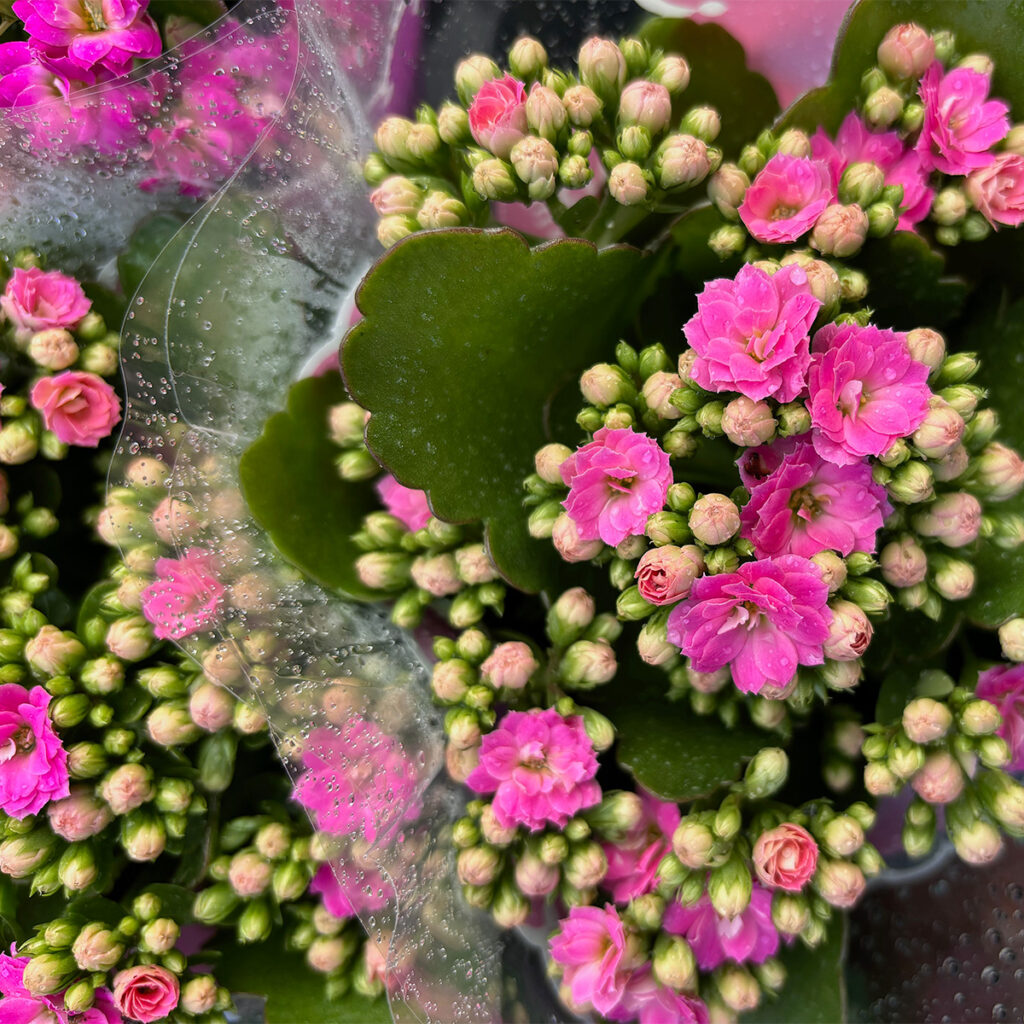
Thriving in temperatures from 12°C – 26°C (55°F – 80°F) with low humidity they will pretty much take care of themselves, just dead head spent blooms and occasionally water when the top inch of soil dries out. Don’t over water them or you will kill your plant with kindness. When they need repotting refresh in a slightly larger pot of peat-free soil and feed monthly from spring to autumn.
Kalanchoe grace shops in the lead up to Christmas but once they have finished flowering they can lose their appeal. Resist the temptation to ditch these low maintenance houseplants, they have worked hard flowering for a couple of months and with a little care they will bloom again.
To achieve new blooms you need to trick the plant into thinking it is winter. They will need about six weeks of short days and longer nights; this rest period will force buds to break so if you fancy a challenge limit the plant’s access to light. Keep it in the dark for around 14 hours a day and water sparingly. Give it a go!
Thanksgiving and Christmas cactus
At this time of year, shops are flooded with Thanksgiving cactus, Schlumbergera truncata, Christmas cactus, Schlumbergera bridgesii; these profusely flowering plants offer months of colourful blooms which inject a burst of colour in to winter days.
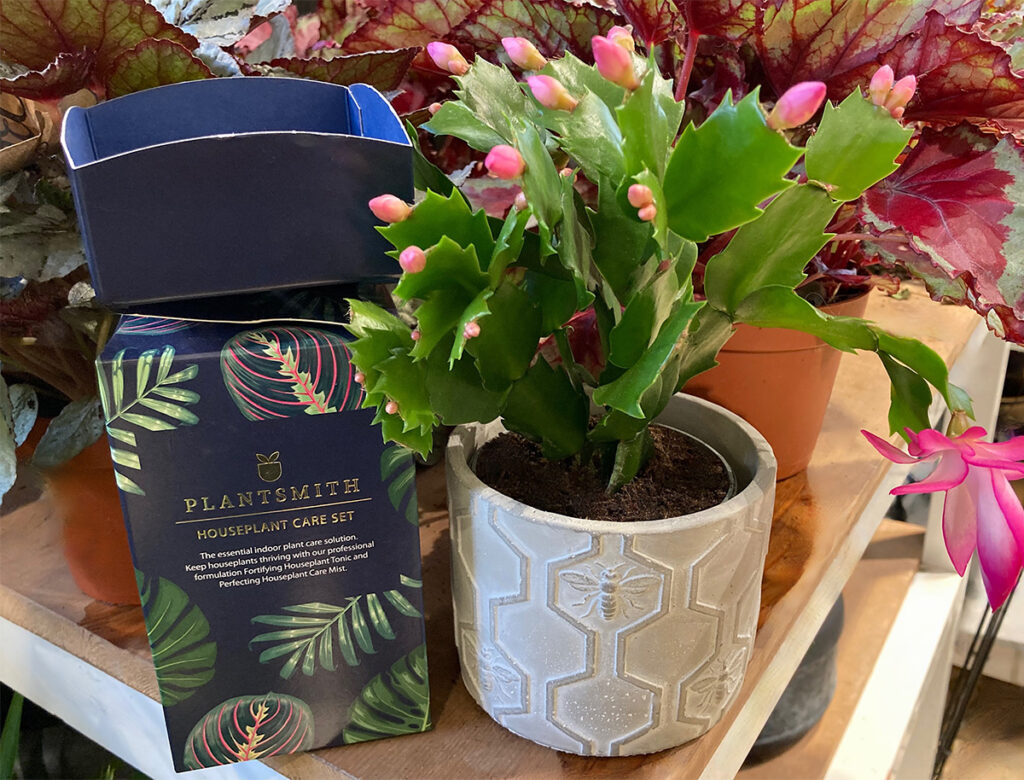
The Thanksgiving cactus Schlumbergera truncata has spiky points like crab’s claws on the tips of stems and flowers from early November, a month earlier than Schlumbergera bridgesii, which starts blooming from December with tubular flowers and rounded, smooth stems.
Keep your plants away from radiators in a humid warm environment around 20°C (68°F) with bright indirect light. These epiphytes naturally thrive hanging from trees in Brazilian rainforests so keep the growing medium loose and free draining. Water the top soil or pebble tray the pot sits on once every week or two or submerge it in a bucket of rainwater and leave to drain.
When your plant is actively growing, feed weekly with Plantsmith’s Invigorating Cacti & Succulent Feed which has the perfect balance of nutrients to encourage healthy green stems and bold, colourful flowers. Protect from indoor pests by regularly spraying foliage with Plantsmith Bug Control Spray.
